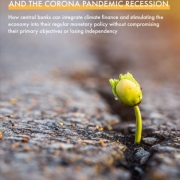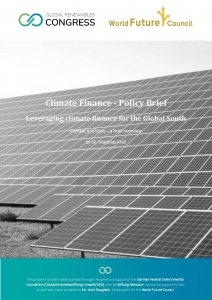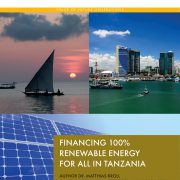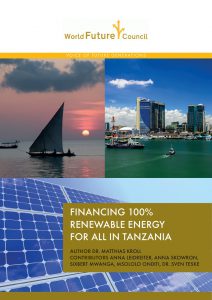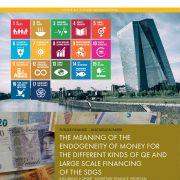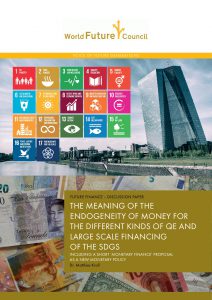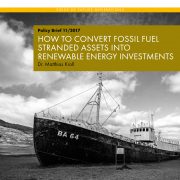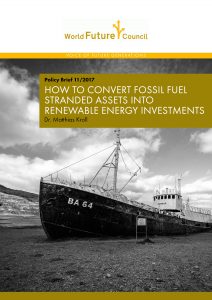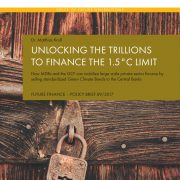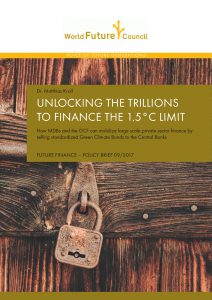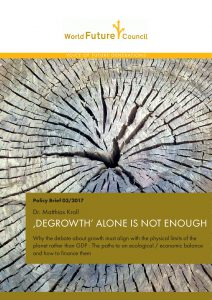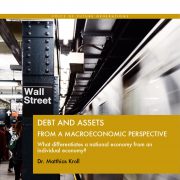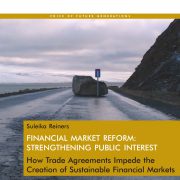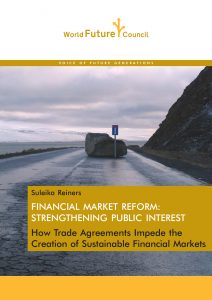Policy Brief: “Leveraging climate finance for the Global South. Context and tools – a brief overview”
Abstract
Climate finance in the Global South differs in various ways from the conditions in the industrialised world. These differences result in several obstacles which could be identified as one reason why the annual global renewable energy investments stagnated at a level around $300 billion since 2011, while an estimated number in an area of $2.4trillion is necessary to meet the 1.5°C limit of the Paris Agreement.
The bulk of these $300bn Renewable Energy (RE)-investments happened in high-income countries and China while only a very small part was invested into renewables in the Global South. Only 0.1% of total clean energy investments accumulated in the 31 poorest countries between 2009 and 2018. The main barrier to more RE-investments in the Global South is not a lack of (green) investment capital, but rather a lack of bankable projects.
This policy brief provides an overall assessment of climate finance mechanisms in the context of domestic and international finance in the Global South. Furthermore, it will give a prospect on a possible new finance mechanism if at least a few relevant central banks from the industrialised world will engage in the global climate finance issue. Such an engagement could be the basis to facilitate the needed RE-investments to stop climate change at 1.5°C.
Ambition For the Future – 100%RE to Accelerate Sustainable Development
Abstract
While the Agenda 2030 set the aim to keep global climate change to 1.5°C, existing policy measures, legal frameworks and initiatives are nowhere near these ambitions. However, research indicates that this target is achievable if we fully decarbonize our economy and society by no later than 2050. This ultimately means a transition to 100% renewable energy (RE) and a complete phase out of fossil fuels.
Therefore, this report highlights how 100% RE is a prerequisite for achieving justice and dignity for present and future generations, including a mechanism to finance this transition. The links between these elements – namely regenerative cities, sustainable agriculture, peace and disarmament and education for sustainable development – and 100% RE underpin the reasoning and strong necessity to transition to 100% RE. The clarification of these interrelationships enables a comprehensive approach to climate action and policy design that disrupts single silo thinking while leaving no one behind.
Financing 100% Renewable Energy for all in Tanzania
Abstract
Tanzania is endowed with abundant, high quality renewable resources which could play a significant role in meeting the country’s energy demand and propel living standards to the level of industrialized countries by 2050. This means however, that an average annual investment of US$9 billion is needed, to reach the 100% RE. In order to provide 100% Renewable Energy which is affordable for all, additional financial means are necessary. A new model focusing on an agreement between MDBs and Central Banks from the industrialized world outlines how to unlock this necessary investment to implement 100%RE for all by 2050.
The Meaning of the Endogeneity of Money
Abstract
The meaning of the endogeneity of money: Financing large scale climate investments and other SDG duties needs new tools. One tool could be a new kind of monetary finance by the central banks. The future finance department of the WFC developed a theoretical background paper which demonstrated how the new tool works and why it precisely fits with recent findings of economic science.
How to convert fossil fuel stranded assets into RE investments
Abstract
To comply with the 1.5°C limit agreed in Paris, a significant fraction of fossil fuel resources cannot be used for energy production. The loss of value of fossil fuels such as oil, gas and coal will cause considerable uncertainty and instability on the financial markets. Also, the unavoidable transformation of energy companies towards renewable energy generation will be even harder when they are weakened by the accelerated depreciation of their fossil fuel assets.
Therefore, a new financial instrument is required to enable energy companies to convert their de facto “stranded” fossil fuel reserves into renewable energy (RE) assets. Since assets already threatened by “stranding” can only be sold in the private financial markets at a minimum residual value, private actors can be excluded as feasible buyers.
Passing on the losses to taxpayers would be neither politically nor financially realistic. The only institutions that have the economic potential to implement a “climate bailout” are Central Banks, just as they have done in the banking crisis since 2008.
Unlocking the trillions to finance the 1.5°C limit
Abstract
In order to meet the +1.5 ° C limit specified in the Paris Agreement, a shift of the global energy supply to 100% renewable energy is necessary at the latest by 2050. Such a process requires annual investments in the order of $1.5 to $2 trillion. Although the costs of renewable energies (RE) have recently declined sharply and further downturns can be expected, current investments are stagnating at approximately $250 billion. Therefore, additional monetary support must be provided, in order to bring the global expansion of RE to the necessary scale.
This report outlines how it can be established through cooperation between the non-industrialized countries, the Multilateral Development Banks (MDBs), the Green Climate Fund (GCF), or other financial institutions, and the Central Banks of the industrialized countries.
‘Degrowth’ alone is not enough
Abstract
Can our production systems become sustainable and balanced within our existing political and economic order? This is, in principle, possible. The expected problems in financing such a transition can be overcome once the analysis is based on actual economic processes.
This paper aims to move beyond the current purely GDP-oriented debate on growth by highlighting the differences between real finiteness and the apparent finiteness of GDP.
Growth and finiteness have to be reconciled if we want peace and sufficiency for possibly over 10 billion people in the future.
Debt and Asset: From a Macroeconomic Perspective
Abstract
The model of a thrifty housewife as the prototype of sustainable domestic bookkeeping is a familiar one. Indeed, the thrifty housewife does everything correctly when she takes care not to spend more than she earns, thus ensuring she does not live above her means. The situation, however, becomes more difficult when many households follow the same rule. In the national economy as a whole, the thrifty housewife can only succeed in her model of living if at least some other households spend more than they earn and become indebted, i.e. live above their means.
Each household can only earn interest on its savings if another economic sector borrows money and becomes indebted but at the same time makes enough profit with the borrowed credit to service the interest and repayment costs. If this is not the case no interest can be generated. The amount of financial assets of one side is always exactly the same as the debt of the other side.
Looking at this from a global perspective, a country can only reach an export surplus if at least one other country has a matching deficit. The attempt of all countries to achieve a surplus simultaneously will fail because the trade balance sheet of the global economy is always zero.
Financial Market Reform: Strengthening Public Interest
Abstract
Financial institutions and governments are keen to stress that regulation should not unnecessarily burden the financial sector. However, the key question must be: how can the public interest be effectively protected and strengthened? — This new WFC-brochure shows the urgent need for financial market reform to catch up and highlights new risks as well as methods and routes towards sustainable financial markets. It demonstrates how trade agreements such as CETA, TTIP and TiSA put enormous brakes on reform and contradict the UN Sustainable Development Goals.

